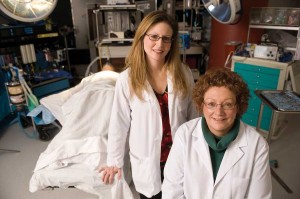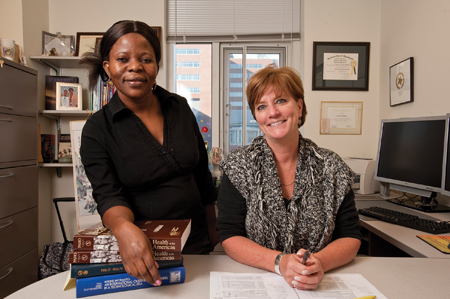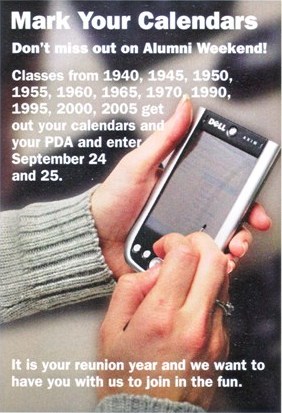Anyone who has worked at a job or trade for a while knows there’s no substitute for experience: one of the best ways to hone career skills is by good, old-fashioned trial and error. In the health care industry, however, the margin for error is narrow, and one mistake could cost the life of a patient.

How then is a health care professional to gain necessary experience with-out jeopardizing the well-being of innocent patients? According to Johns Hopkins University School of Nursing faculty members Kathryn Kushto-Reese, MS, RN and Shari Lynn, MSN, RN, the answer is simulation education.
“We both attended simulation conferences,” says Kushto-Reese, “but realized there’s not much training available for best practices in simulation.” Their solution was to organize “Simulation as a Cutting Edge Tool,” a one-day interactive workshop for nurse educators with a basic familiarity of simulation. Scheduled for April 17, 2009, the course will provide an overview of simulation tools available and information on how they can be most effectively implemented in hospital and nursing school settings.
The conference is a collaboration among four organizations-The Johns Hopkins University Schools of Nursing and Medicine, The Johns Hopkins Hospital (JHH) Department of Nursing, and the Institute for Johns Hopkins Nursing (IJHN)-with each contributing both their facilities and expertise. In addition, Laerdal Medical, the company that produces most of the simulation equipment used at Hopkins, is making a generous donation to the conference.
The conference will be held both at the school and the JHH Simulation Center, a state-of-the-art facility internationally known for leading-edge innovations. The Center incorporates the very basic forms of standardized simulation, which include role playing to complex computer simulation, such as using computer software to aid in decision-making. Various low and high fidelity simulation equipment will be used at the conference, including skill sets, simulation people, and simulation software.
Kushto-Reese and Lynn hope the participants of the conference will come away with a new understanding, and a new appreciation for simulation education. “We want them to be able to educate others in incorporating simulation education in the curriculum,” Kushto-Reese said. “It would also be nice to see people contribute to publishing literature about the best practices of simulation education, and most importantly, work as a team.”
“An interdisciplinary focus is a main component of the experience,” adds Lynn, who joins Kushto-Reese, JHUSON faculty and directors, and leaders from JHH and other medical institutions on the cross-disciplinary conference faculty. “Collaboration is important because in real-life situations, you’ll have doctors, nurses, and other health care professionals working side-by-side. This is an area most can improve on in practice.”
–Jonathan Eichberger
 “Um … am I cut out for this nursing thing?”
“Um … am I cut out for this nursing thing?” “Tanzania Needs You!”
“Tanzania Needs You!” Touchdown!
Touchdown! Class News
Class News Evacueess "Glad to be Alive" After Katrina
Evacueess "Glad to be Alive" After Katrina







